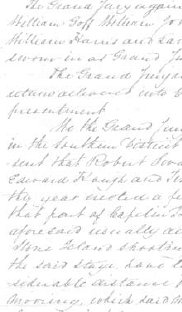
Whatís In My Journal William Stafford
Odd things, like a button drawer. Mean things, ishhooks, barbs in your hand. But marbles too. A genius for being agreeable. unkyard cruciixes, voluptuous discards. Space for knickknacks, and for Alaska. Evidence to hang me, or to beatify. Clues that lead nowhere, that never connected anyway. Deliberate obfuscation, the kind that takes genius. Chasms in character. Loud omissions. Mornings that yawn above a new grave. Pages you know exist but you canít ind them. Someoneís terribly nevitable life story, maybe mine.
® 1991, 1998 by the Estate of William Stafford. Reprinted from The Way It Is by permission of Graywolf Press, Saint Paul, Minnesota.

You may be familiar with free writing (Elbow, 1998), brainstorming and mapping as ways to get started on writing. They can also prompt reflection and creativity by helping you tap into your intuitive knowledge. You can start any of the approaches with an idea, question or feeling that you have, or you could use one of the prompts on the next page.
Free writing. Write or type spontaneously without revising or editing. You might set a time limit or write until youíre done. Try to keep your pen or fingers moving and let your thoughts flow. If you are stuck for words, rewrite a sentence or phrase. This process can lead to fresh insights.
When you stop free writing, review and underline words or phrases that catch your attention. Use those words as starting points for more writing, or shape them into a poem. Either process may lead to additional insights.
Brainstorming. List words and phrases that come to mind about an idea, question or feeling. Keep listing words until no more come to mind. You might return to the list, choose a few words and brainstorm or write about them.